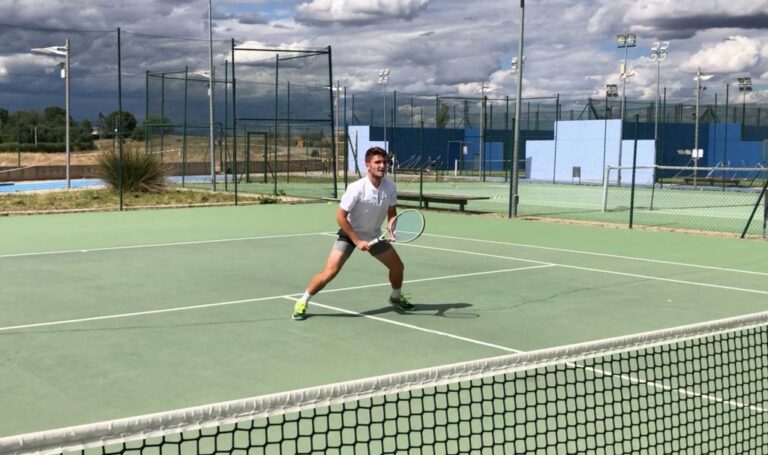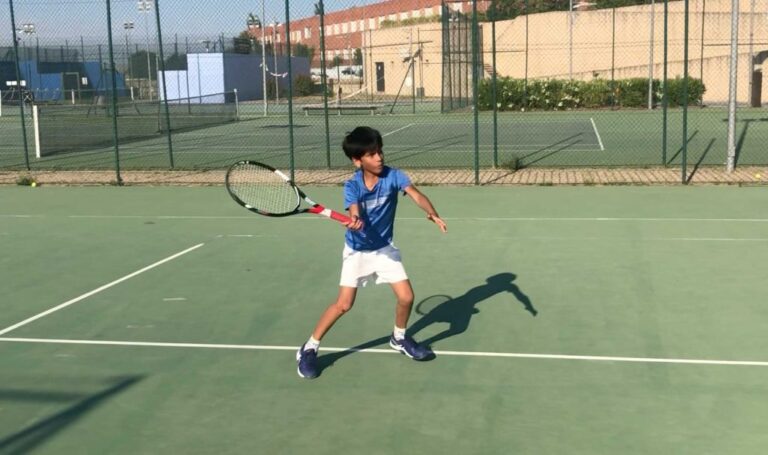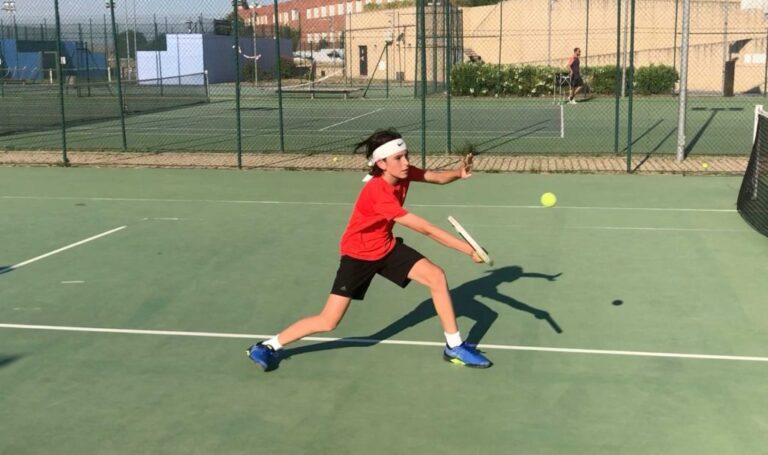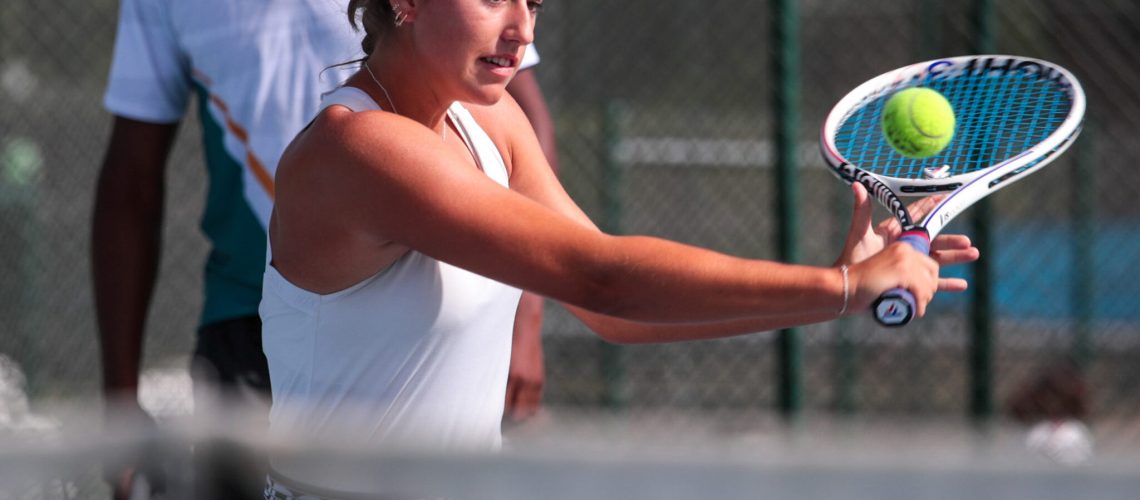In this article we will see some tips for volley that can help you gain more confidence in this shot. We will not dwell on the fundamental technique, but will look for relevant aspects that can facilitate your to be more efficient at the net and in the next articles we will expand the content.
Do a split step with your feet back at the volley
The split step gives us the possibility to change the direction and start towards the ball with greater explosiveness. It also helps us get in sync with the ball and gain those valuable milli-seconds in our reaction. But there is one thing we have to keep in mind every time we do it: the inertia of the body, or where the weight falls.
The idea is that the weight of the body has to fall naturally forward after the split that will help us fill the space in front. This natural fall will also help us cut the angle of the ball, entering diagonally through it. So, while we are volleying, we must do the split step with the feet back and cause the falling of our body weight.

The subject changes when we go up, after a approach, to the net. There the body carries a lot of inertia forward. In this case we must balance doing the split with the feet forward so that the body continues to fall but not stumble. So remember: when you are volleying, do the split with your feet behind and keep in mind that what we want to cause is a natural fall of the body and then intercept the ball.
Cut the angle to volley
Another reason to enter diagonally is to look for the inertia of the body in the shot. In the volley, to move the ball, we use the weight of the body. Therefore, the more natural that body drop is, the easier it is to make the gesture. Entering diagonally forward, it automatically generates this inertia for you.
Keep your elbows in front of your body

In some tennis traditions it is taught to base the support point of the swing on the shoulder, but for me, the best thing would be to do it on the elbow. For the simple fact of high speed and the ball coming back earlier when we are volleying, compacting the gesture would help us to be more effective. Therefore the elbows in front of the body and don’t make a big backswing.
Of course, in low speed balls, in high and hanging balls, in those shots in which we need to print more force on the ball, we can open the preparation a little more, but first gaining the maximum inertia of the body fall forward and then completing the missing strength with the arm. The mistake would be not to use the weight of the body and supply it with the broadest movement of the arm, since we would lose control without generating enough power.
Turn your body till facing the contact point
For the same reason of saving time, we must compact the preparation as well. Arming our body sideways we would get more power if we had enough time, but it will be the case in the volley just in low speed balls. Therefore we must shorten the body turn in preparation. To have references, it is best to arm facing the contact point, since you should hit the ball diagonally forward, more or less at 45 degrees. With this reference you will get good body orientation and also the possibility of using rotation in the shot.
Maintain the eye level at the hight of contact with the ball
We now turn to the volley tips that give us control in our shots. We will look first at the height of the contact with the ball. It would be important to look at it especially if we are forced to play low balls. In this case we should flex our knees to lower our eyes. Normally the error comes from laziness, when we lower the racket alone without flexing our knees; or due to a lack of strength, when our legs can’t support the weight when bending over and it makes our back bend.
Speaking of impact height, the best would be to look for the volleys above the net whenever possible, although a good opponent would always try to find the most uncomfortable positions for us.

Keep your left hand close to the right
And finally, another tip for volley that gives us control: compact hands, don’t dance with your free hand. Things change there as we need to generate more power and use some baseline concepts, but in high speed volley keep your hands close. Do not arm by spreading your hands far apart and do not finish the backhand by sticking out your chest and spreading your hands.
With these tips, you can move forward to seek greater control and effectiveness for your volley. In the next articles we will talk about more details on the subject. And finally, I leave you some articles that may be of interest to you in relation to the volley: “Your Center on the Court“, “Basic Rules of an Approach“.










